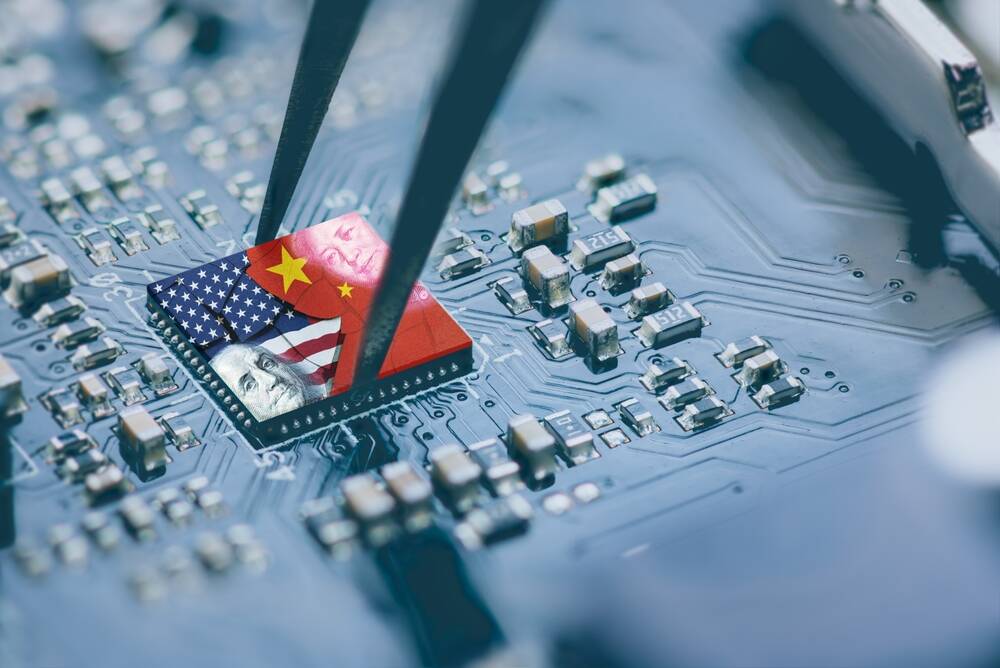from The Register:
A Chinese industry group has accused Intel of backdooring its CPUs, in addition to other questionable security practices while calling for an investigation into the chipmaker, claiming its products pose “serious risks to national security.”
The Cybersecurity Association of China (CSAC), in a lengthy post on its WeChat account on Wednesday described Intel’s chips as being riddled with vulnerabilities, adding that the American company’s “major defects in product quality and security management show its extremely irresponsible attitude towards customers.”
The CSAC also accused Intel of embedding a backdoor “in almost all” of its CPUs since 2008 as part of a “next-generation security defense system” developed by the US National Security Agency.
This allowed Uncle Sam to “build an ideal monitoring environment where only the NSA is protected and everyone else is ‘naked,’” the post continued. “This poses a huge security threat to the critical information infrastructure of countries around the world, including China,” the industry group claims.
The infosec org also recommends the Cyberspace Administration of China open an investigation into the security of Intel’s products sold in the country “to effectively safeguard China’s national security and the legitimate rights and interests of Chinese consumers.”
Intel did not immediately respond to The Register’s inquiries.
Here is a machine translation (via google translate) of CSAC’s post:
Frequent vulnerabilities and high failure rates. Intel product cybersecurity risks should be systematically checked
China Cyberspace Security Association October 16, 2024 09:02
Frequent vulnerabilities and high failure rates
Intel product cybersecurity risks should be systematically checked
- Frequent security vulnerabilities
In August 2023, Intel CPU was exposed to the Downfall vulnerability, which is a CPU transient execution side channel vulnerability. It uses the Gather instruction in its AVX2 or AVX-512 instruction set to obtain sensitive data such as keys, user information, and key parameters previously stored in a specific vector register buffer. The vulnerability affects Intel’s 6th to 11th generation Core, Celeron, and Pentium series CPUs, as well as 1st to 4th generation Xeon processors. In fact, as early as 2022, researchers reported the vulnerability to Intel, but Intel, knowing the existence of the vulnerability, neither acknowledged it nor took effective action. It continued to sell products with vulnerabilities until the vulnerability was publicly reported, and Intel was forced to take vulnerability repair measures. Five victims have filed a class action lawsuit against Intel in November 2023 in the San Jose Branch of the U.S. Federal District Court for the Northern California in the name of themselves and representatives of “CPU consumers across the United States”.
Coincidentally, in November 2023, Google researchers disclosed that Intel CPUs have a high-risk vulnerability, Reptar. Exploiting this vulnerability, attackers can not only obtain sensitive data such as personal accounts, card numbers and passwords in the system in a multi-tenant virtualization environment, but also cause the physical system to hang or crash, resulting in denial of service for other systems and tenants it carries.
Since 2024, Intel CPUs have successively exposed vulnerabilities such as GhostRace, NativeBHI, and Indirector. Intel’s major defects in product quality and security management show its extremely irresponsible attitude towards customers.
- Poor reliability and indifference to user complaints
Since the end of 2023, a large number of users have reported that crashes occur when using Intel’s 13th and 14th generation Core i9 series CPUs to play specific games. Game manufacturers have even added pop-up processing in the game to warn users who use these CPUs. Dylan Browne, Unreal Engine Supervisor and Visual Effects Manager at visual effects studio ModelFarm, posted that the failure rate of computers using Intel processors in his company was as high as 50%.
With concentrated user feedback and no way to cover up, Intel finally had to admit that there were stability issues with its products and issued a so-called preliminary investigation report, attributing the problem to the motherboard manufacturer setting too high a voltage. However, it was immediately refuted by the motherboard manufacturer, who stated that the motherboards it produced were developed according to the data provided by Intel for BIOS programs, and the cause of the crash was not the motherboard manufacturer. In July 2024, Intel issued a statement to explain the frequent CPU crashes, admitting that due to the incorrect microcode algorithm sending too high a voltage request to the processor, some 13th and 14th generation processors became unstable.
Frequent crashes occurred at the end of 2023, and Intel only identified the problem and provided an update program half a year later, and the mitigation measures given within half a year did not work, which fully reflected that Intel did not actively and honestly face the problems when facing its own product defects, but simply ignored, shirked and procrastinated. Some professionals speculate that the root cause is that Intel has actively sacrificed product stability in order to gain performance improvements and regain competitive advantages. It is also reported that the US law firm “Abington Cole + Ellery” has begun investigating the instability of Intel’s 13th and 14th generation processors, and will file a class action lawsuit on behalf of end users.
- Under the guise of remote management, the real purpose is to monitor users
Intel, together with HP and other manufacturers, jointly designed the IPMI (Intelligent Platform Management Interface) technical specification, claiming that it is to monitor the physical health characteristics of the server, and technically manages and controls the server through the BMC (Baseboard Management Controller) module. The BMC module allows users to remotely manage devices, and can realize functions such as starting the computer, reinstalling the operating system, and mounting ISO images. The module has also been exposed to high-risk vulnerabilities (such as CVE-2019-11181), resulting in a large number of servers around the world facing great security risks of being attacked and controlled.
In addition, Intel also integrates third-party open source components with serious vulnerabilities in its products. Taking the Intel M10JNPSB server motherboard as an example, this product supports IPMI management and is currently out of after-sales service. The last firmware update package was released on December 13, 2022. Analysis shows that its web server is lighttpd, with version number 1.4.35, which is actually the version of March 12, 2014. At that time, the latest version of lighttpd had been upgraded to 1.4.66. The difference between the two is 9 years, which is surprisingly large. This irresponsible behavior puts the network and data security of the majority of server users at great risk.
- Hidden backdoors endanger network and information security
The autonomous running subsystem ME (Management Engine) developed by Intel has been embedded in almost all Intel CPUs since 2008. It is part of its vigorously promoted AMT (Active Management Technology), allowing system administrators to perform tasks remotely. As long as this function is activated, the computer can be accessed remotely regardless of whether the operating system is installed. Based on the redirection technology of peripherals such as optical drives, floppy drives, and USB, it can achieve the effect of physical contact with the user’s computer. Hardware security expert Damien Zammit pointed out that ME is a backdoor that can fully access the memory, bypass the operating system firewall, send and receive network packets without the operating system user’s knowledge, and users cannot disable ME. Intel AMT (Active Management Technology) based on ME technology was exposed to have a high-risk vulnerability (CVE-2017-5689) in 2017. Attackers can bypass the authentication mechanism and log in to the system directly to obtain the highest authority by setting the response field in the login parameters to empty.
In August 2017, Russian security experts Mark Ermolov and Maxim Goryachy found a hidden switch suspected to be set by the NSA (National Security Agency) through reverse engineering technology. The switch is located in the HAP bit in the PCHSTERP0 field, but the flag bit is not recorded in the official document. Dramatically, HAP is the full name of High Assurance Platform, which belongs to the NSA-initiated project to build a next-generation security defense system.
If the NSA directly shuts down the ME system by turning on the hidden switch of the HAP bit, and at the same time all other Intel CPUs in the world run the ME system by default, it is equivalent to the NSA being able to build an ideal monitoring environment where only it is protected and everyone else is “naked”. This poses a great security threat to the critical information infrastructure of countries around the world, including China. At present, the software and hardware on the ME are closed source, and its security mainly relies on Intel’s unilateral commitment, but the facts show that Intel’s commitment is pale and unconvincing. Using Intel products poses serious risks to national security.
- It is recommended to initiate a cybersecurity review
According to reports, nearly a quarter of Intel’s global annual revenue of more than US$50 billion comes from the Chinese market. In 2021, Intel’s CPU accounted for about 77% of the domestic desktop market and about 81% of the notebook market; in 2022, Intel’s x86 server market share in China was about 91%. It can be said that Intel has made a lot of money in China, but the company has continued to do things that harm China’s interests and threaten China’s national security.
Previously, the US government passed the so-called “Chips and Science Act” to unreasonably exclude and suppress China’s semiconductor industry. Intel is the biggest beneficiary of this bill. Intel CEO Pat Gelsinger successfully tied Intel to the US government and became the largest partner of the US chip strategy. It not only received $8.5 billion in direct subsidies, but also $11 billion in low-interest loans.
In order to please the US government, Intel actively took a stand to suppress China on the so-called Xinjiang-related issues, requiring its suppliers not to use any labor, purchase products or services from the Xinjiang region. In its financial report, it even listed Taiwan Province on a par with China, the United States, and Singapore, and took the initiative to cut off supply and service to Chinese companies such as Huawei and ZTE. This is a typical “holding the bowl to eat, and putting down the bowl to smash the pot”.
It is recommended to initiate a cybersecurity review of Intel’s products sold in China to effectively safeguard China’s national security and the legitimate rights and interests of Chinese consumers.
We need widespread adoption and innovation in OPEN ARCHITECTURES like RISC-V. Anything else is just citizens and companies being used as pawns to do the dirty work for rivaling nation states that spy on and stifle the liberties of their own citizens.
Intel has most likely hidden a back door in Intel chips and China has most likely hidden a back door into ARM, ESP8266, ESP32, and other chipsets. No one can ever prove this conclusively without violating NDA’s because these are closed architectures.
What is stopping a CPU manufacturer from close-sourcing part/most of their CPU built on RISC-V. Even if the CPU is fully open, backdoors can be hidden in plain sight with clever design. And beyond the CPU, other components in our PC will remain closed. A new ISA isnt going to fix the systematic problems of capitalism or facism, where the corporations can exist and act without really feeling with any consequences. We must find a way to hold them accountable.
ESP32
I love this chip :'-(
say it ain’t so95% likely China could use them as a DDOS attack vector someday. They’re ubiquitous. Espressif Systems is a Chinese company based in Shanghai.
I keep mine only attached to ad-hoc networks with no outside signal, but there’s literally no saying whether it has its own modem
Given the measurable power output, I’d think not, but who’s to say what it does when connected to stable power node after X hours.
The CSAC also accused Intel of embedding a backdoor “in almost all” of its CPUs since 2008
Hmmm They couldn’t be referring to the extensively researched, reverse-engineered, and years-documented Intel Management Engine, could they?
CSAC is only just now coming across this information? Better late than never, I guess.
Edit: Having now finished the article, yes they are.
Probably just posturing in preparation for trade war escalation or threats around banning Intel chips now that they’re ready to take on those markets. https://www.ft.com/content/5511d73a-1ada-4884-a559-681502300e4f
^ Exactly this. First thing I thought because it’s so obvious.
You do realize virtually none of this development in isolationism was around in 2008?
I don’t understand what you mean. I’m suggesting that China could be making a big deal of old news now that they are offering a viable alternative to Intel chips. Possibly to drum up more business globally, or to have an excuse to ban Intel chips domestically.
It could also be to make that threat in the face of increasing trade war escalation from the United States, as a sort of “watch what you’re doing” warning.
this is absolutely the information that needs to be at the top… old news, we know about it, calling it a back door is kinda disingenuous clickbait (or in this case, diplomacy bait?)
It’s all because of the US chip monopoly, if it were so they would not be so bold to hardware backdoor half of the PCs on the planet. I think as consumers we should have the right to choose if we want to have an American, EU, Chinese or Russian Backdoor in our computers, thank you very much.
deleted by creator
I’m sure the NSA is more than willing to pitch in. It’s a team effort between the state and the capitalist class.
IME has been sketchy as fuck since before Intel gained market dominance, much less lost it. I’m surprised it took any semi mainstream media in any country this long to report on it, there have been defcon talks about the massive black hole that is local and ime instructions for Intel chips for at least a decade now.
That’s, uh, pretty fucking ironic.
It’s amazing that Westerners still think of China—or really any other state—before the US when it comes these things. Just oblivious to the propaganda you’re soaking in every day.
Not to imply that China has never or will never do anything of the sort.Why? Did the PRC create this system of worldwide surveillance?

Don’tcha think?












